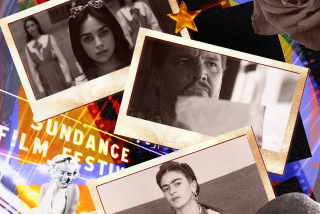Under the Radar: Frederick Wiseman, and films from Brazil to Scandinavia
Our annual compilation of overlooked films. Each reviewer chose five films to highlight.
“A Bread Factory”: Patrick Wang’s two-movie, four-hour, intimate opus about saving a community theater space exemplifies the soul of indie filmmaking: truthful, moral, beautifully odd (musical numbers!) and enjoyably diverse. A tapestry of humanity to remind you why you fell in love with the arts, and why they deserve our support.
“In the Intense Now”: A masterful, personal work of archival assemblage and memory, João Moreira Salles’ probing, mournful documentary examines the political turbulence of 1968 in four countries (Brazil, China, France and Czechoslovakia) through how amateur filmmakers witnessed history. A hypnotic analysis about the ebb and flow of revolutions.
FULL COVERAGE: Under the Radar 2018 »
“Monrovia, Indiana”: For his 44th documentary, Frederick Wiseman took his keen eye for how we live (and how we talk about how we live) to a Midwestern farming community struggling with economic and cultural shifts. This understatedly political film asks, are they protective of their traditions, or held hostage by them?
“Araby”: The sensitive thrum of confessional storytelling, and the thick stir of unobtrusive neo-realism, combine in João Dumans’ and Affonso Uchoa’s captivating Brazilian film about a migrant worker’s peripatetic life, measured in joys, disappointments and a gathering loneliness.
“Border”: Ali Abbasi’s film of “Let the Right One In” writer John Ajvide Lindqvist’s fractured fairy tale is an atmospheric humdinger about a sensorially gifted, misshapen border security guard on a charged journey of identity. A compact gem about belonging and morality, with some wonderful twists.
More, please: The Academy ratio (4:3, sometimes called 1:33) is back, as evocatively used in “First Reformed” and “Cold War” (and even Jonah Hill’s “Mid 90s”). Close-ups are richer, verticals are more powerful, and the dynamic between people and spaces suddenly seems fresh again.
Enough already: Wallpaper music scores with no personality. What happened to melodies with purpose? Motifs that commented on the movie, that burrowed into your consciousness? Filmmakers, note how “First Man” and “If Beale Street Could Talk” use music as rhapsodic shading, and follow their example.
------------
Movie Trailers
More to Read
Only good movies
Get the Indie Focus newsletter, Mark Olsen's weekly guide to the world of cinema.
You may occasionally receive promotional content from the Los Angeles Times.






